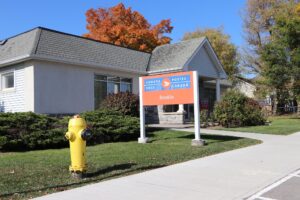
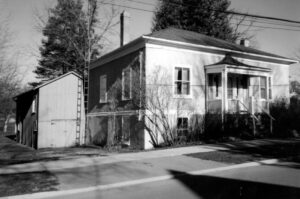
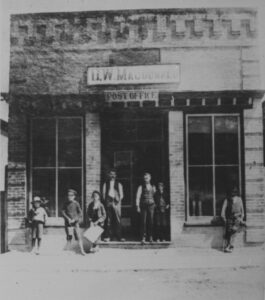



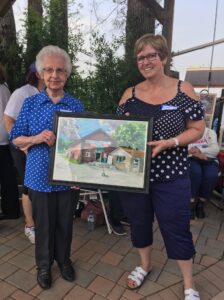
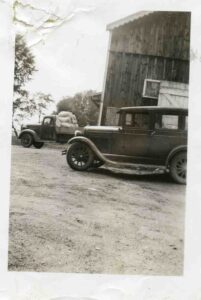
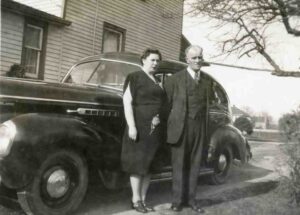
(Excerpt from 4 SEPTEMBRE 1997 ASSEMBLÉE LÉGISLATIVE DE L_ONTARIO http://hansardindex.ontla.on.ca/hansardeissue/36-1/l224.htm at about 1:30 pm)
Mr John O’Toole (Durham East): On September 6, 1997, the village of Brooklin, located in my riding of Durham East, will celebrate the 150th anniversary of its naming.
The village, located north of Whitby on Highway 12, was founded in 1840 and was previously named Winchester. When residents of the village went to apply for a post office, they discovered there was already a Winchester post office elsewhere in Ontario. On August 11, 1847, the 300 inhabitants of the village met and agreed to change the name to Brooklin. No one is certain why they chose that name, but perhaps it’s because of the little brook that trickles through the town.
Throughout the day on September 6, several events have been scheduled to commemorate the heritage of this village, with horse-drawn carriages, entertainment and self-guided tours. Visitors to Brooklin can see some of the historic buildings, such as the old Brooklin Mill, which today houses a hardware store and small engine repair shop, and a former stable currently being used by the W.J. Medland and Son Ltd business.
Like so many Ontario villages, Brooklin is no exception in its contribution to this wonderful province of Ontario. At one time, Brooklin was known as being the smallest town in the world to have a senior A lacrosse team. In 1968 the Redmen senior A lacrosse team won the esteemed Mann Cup, and again in 1969, and the team went on to win the cup again in 1985, 1987, 1988 and 1990. The Mann Cup: Morley Kells would like to forget about this.
Recognition should also be given to community leaders such as Dr John McKinney and John Dryden.
I would like to ask the members of the Legislature to join me in congratulating the residents of Brooklin on their 150th celebration.
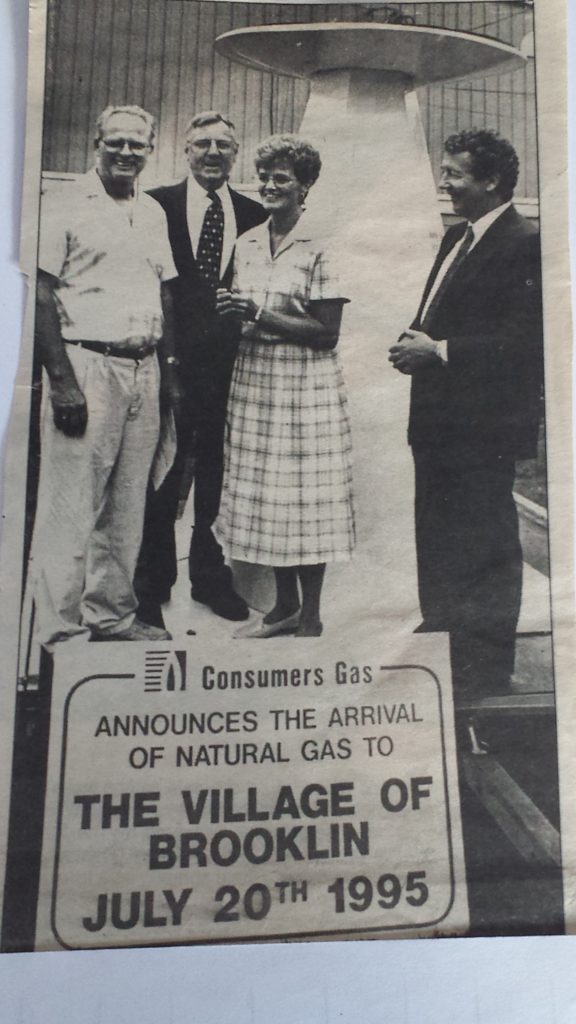 On June 25, 1995, the Consumers Gas Company in Whitby, along with their authorized dealer, Advantage Air Care in Brooklin, was pleased to inform Maureen and Gord Stevens that they were the winners of the draw for a brand new furnace installation to the value of $3,500.00. The arrival of natural gas to Brooklin was announced on July 20, 1995, at the lighting of the torch ceremony in front of the Luther Vipond arena, where Maureen was given the honour of “throwing” the switch. Mayor Tom Edwards attended the ceremony, along with Consumers Regional General Manager, Paddy Davis. Because Maureen and Gord were one of the first 100 natural gas customers in Brooklin, the happy couple also received a coupon from Uxbridge Nurseries Ltd. for a free 2 ft Spruce Tree. This tree was planted in the back yard of their house on Queen Street and is now a 30 ft beauty! Maureen and Gord were sorry they couldn’t take the tree with them when they moved to Kimberly Drive.
On June 25, 1995, the Consumers Gas Company in Whitby, along with their authorized dealer, Advantage Air Care in Brooklin, was pleased to inform Maureen and Gord Stevens that they were the winners of the draw for a brand new furnace installation to the value of $3,500.00. The arrival of natural gas to Brooklin was announced on July 20, 1995, at the lighting of the torch ceremony in front of the Luther Vipond arena, where Maureen was given the honour of “throwing” the switch. Mayor Tom Edwards attended the ceremony, along with Consumers Regional General Manager, Paddy Davis. Because Maureen and Gord were one of the first 100 natural gas customers in Brooklin, the happy couple also received a coupon from Uxbridge Nurseries Ltd. for a free 2 ft Spruce Tree. This tree was planted in the back yard of their house on Queen Street and is now a 30 ft beauty! Maureen and Gord were sorry they couldn’t take the tree with them when they moved to Kimberly Drive.
By Jennifer Bailey Hudgins
Russell (Russ) Short graduated from the University of Toronto School of Pharmacy and his first place of employment was with Jury and Lovell in Oshawa. In the late 40’s he moved to Toronto to work for Hoopers Drug Store at Bloor and Sherbourne where he partnered with Bill Burgess, son of the owner.
1950’s saw the introduction of discount retail making retailing by the smaller service providers more challenging, so Russ made the decision to relocate to a town that could support a Pharmacy. This was at a time when Brooklin was growing with a new residential subdivision and the community supported a medical centre as well as doctors offices.
Russ purchased 65 Baldwin Street and moved with his wife Bernice and sons Bob, Jim and Gary to Queen Street in Brooklin. Construction of Short’s Pharmacy commenced in 1959 with the grand opening in May 1960. Brooklin’s first Pharmacy! The family then purchased a home on North Street.
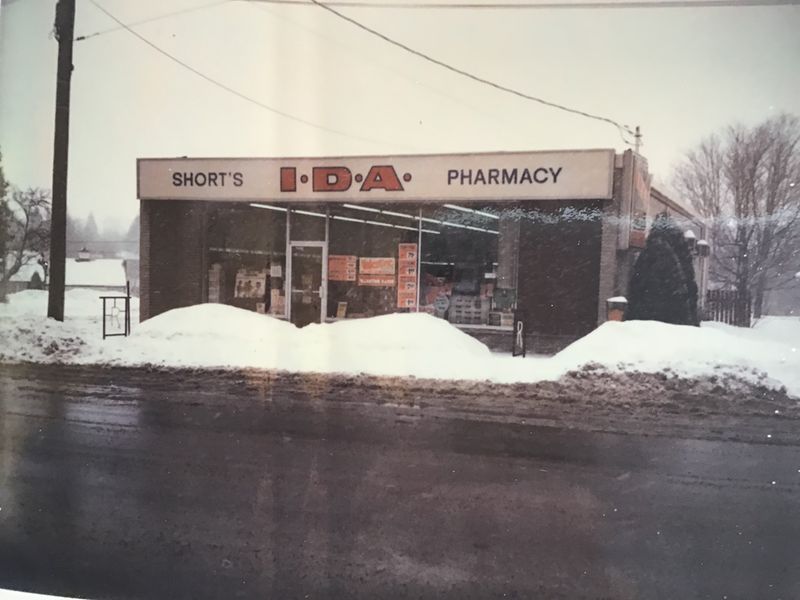
In the early days the store was open 7 days a week with extended hours on Mondays, Tuesdays and Fridays. ( 9 to 9 ) and new jobs were brought into the village when Russ employed locals. The pharmacy served an area well beyond Brooklin, as flyers were regularly distributed to residents as far as Locust Hill in the west, Hampton to the east 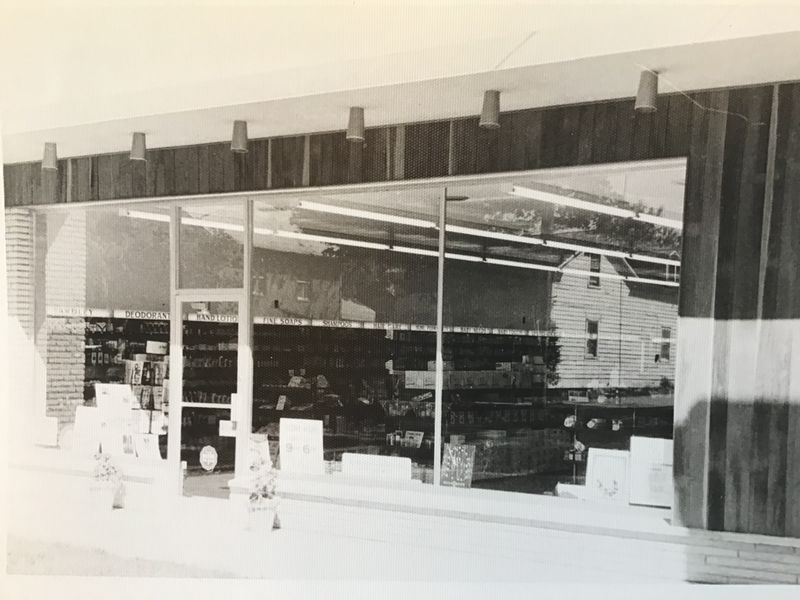
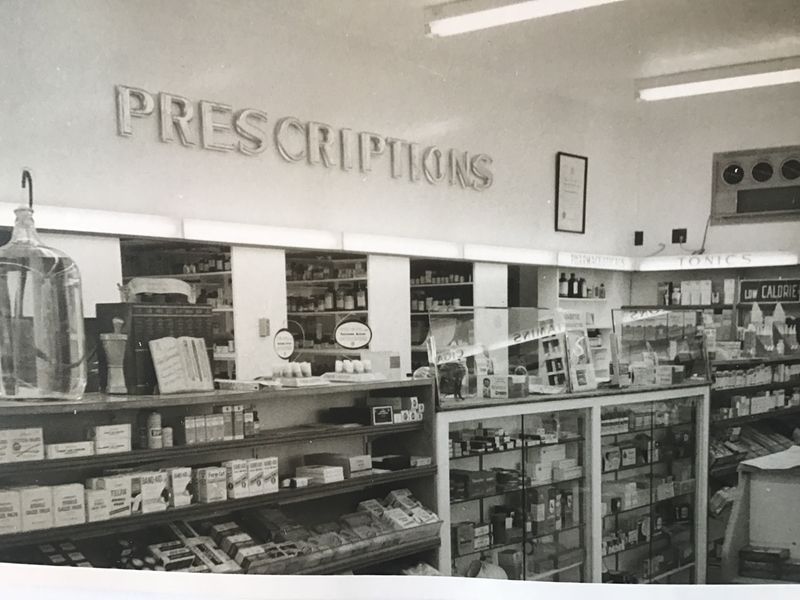 and Greenbank to the north.
and Greenbank to the north.
In 1971 Russ was joined by Bill Burgess who re-located from Toronto to live in Ashburn. In 1980 Russ suffered a stroke and was not able to return to the Pharmacy. His partner Bill Burgess continued on with the business, and at his retirement, Bill’s daughter Peggy Frankovich took over. Russ passed away in 1984 and is buried in his home town of Bowmanville.
By Jennifer Bailey Hudgins
In 1936 my Grandmother, Hattie Bailey opened a concession stand in the orchard between her house at 149 Baldwin Street, N and my Grandfather Jerry’s Sunoco service station at 157.
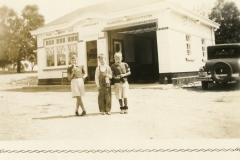
This stand was referred to as “the Booth” and it was from here that Hattie sold sandwiches, beverages, baked goods, candy, cigarettes, ice cream and paintings by local artist Cliff Delong.
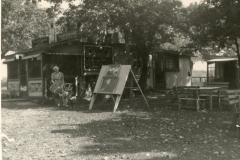
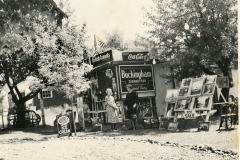
It was here that Verna Sonley Hodson began to work at the age of twelve in the summers before her marriage to Ray. A neighbour, Mrs Pengally baked pies Hattie sold by the slice and local women brought flowers from their gardens. Members of Rebecca Lodge had their tea parties in the orchard and the UCW held quilting bees.
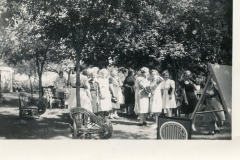
Before closing “the Booth” in 1953, Hattie also operated a concession stand for many years at the Brooklin Spring Fair.
Take a short walking tour of some of our celebrated heroes as you read their short bios on banners hanging on downtown lampposts for a 4-week period. Here is a link to an interactive map of their placement.
Read about the changes to Brooklin Village as it introduced the Meadowcrest housing development on the west side of Baldwin Street and north of Winchester Road, adding communal water, hydro upgrades, and administration under the Township of Whitby.
http://www.customprinting.ca/companyinfo/newspaperarchives.html
Preserving a vital part of your history.